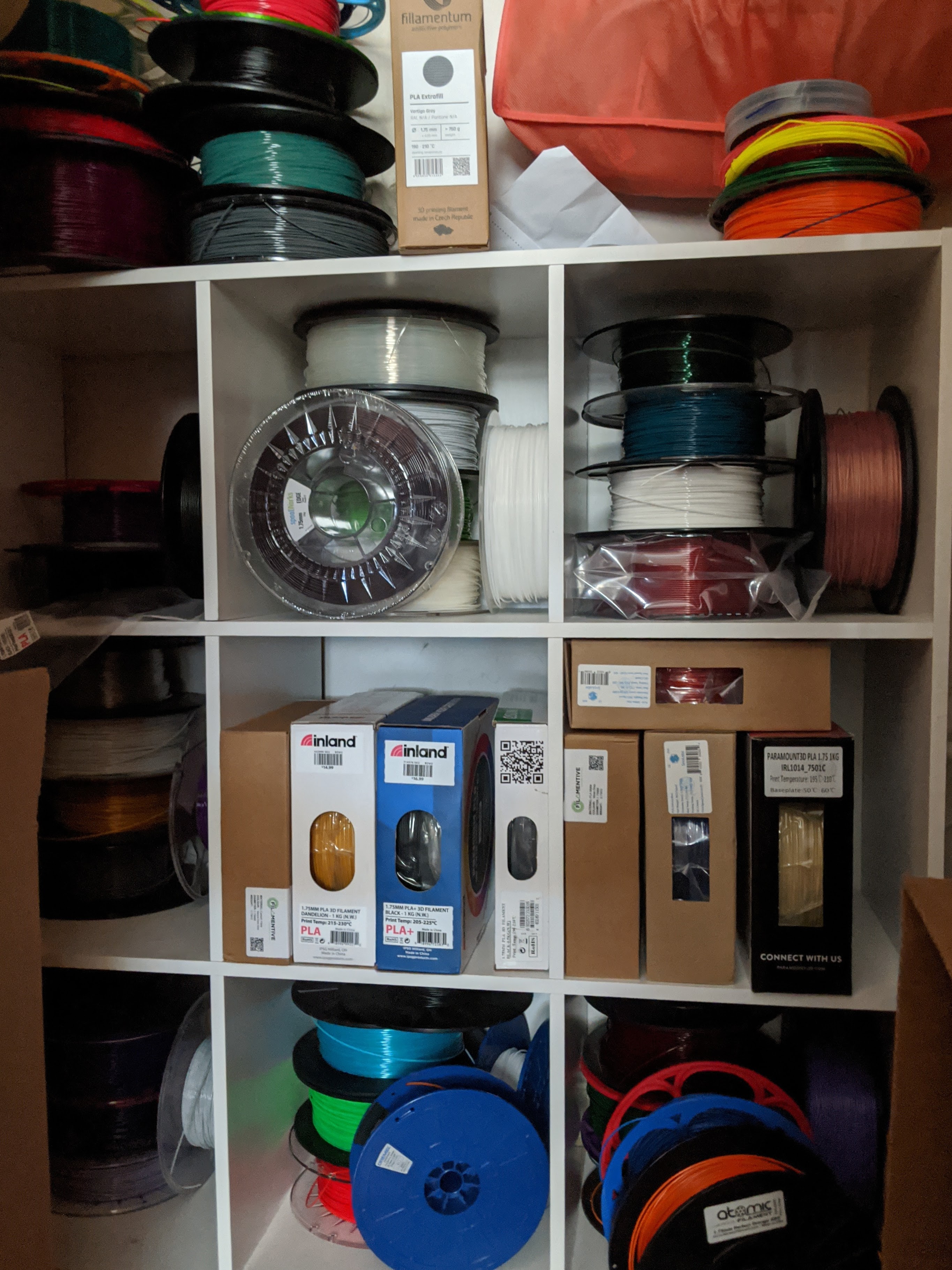Intro to 3D Printing, Part 2
Now that you've made it through Part 1, let's take a look at what you need to know about and what you might need to consider before either buying a 3D printer or bringing one into your home. As with every hobby, there's a lot of extra things that aren't written on the box; my goal is that you'll be much better prepared should you jump in with both feet.
The information is organized into three categories: before you get a 3D printer, before you use it for the first time, and after you use it. All three sections have information that you might find useful, and we recommend reading it all before making a decision. Today's article will only be covering the first section.
Before The 3D Printer
The first thing, even before which printer to get, is "where will it go"? A bedroom? The living room? The garage? A 3D printer requires a fair amount of space to itself; you'll need to make sure you can set aside space roughly the size of a coffee table where the printer will live. Remember that it's not just the machine that you'll need space for -- there will be tools, filament, and more that needs to be stored around or nearby the printer.
Filament is an even bigger question; though each roll isn't that big, it's easy to eventually wind up with more than expected. Some people opt for storage in closets or cabinets, while others opt for wall-mounted solutions that allow different spools to be easily grabbed. Below are some examples that show how much room this can take up!


3D Printers and Pets (or Little Humans)
It's no surprise that most creatures are curious. Cats, dogs, and little humans will want to see what this new thing is that makes noise, and the extra plastic bits (we'll talk about how to deal with plastic waste later) are especially enticing. Most of the time, they'll investigate the machine and then move on, but some pets won't be able to leave it alone. Here's what you'll need to watch out for:
Hot Parts
The nozzle of a 3D printer (the tip of the print head where the plastic comes out) is typically unprotected and the average print head (called the "hot end") can reach 250C, which is ~482F. Most prints with PLA take place at or around 210˚C (410˚F), which means that little bit of metal is really hot for the entire process of printing. That will cause burns before you notice -- and they hurt! Most 3D printers also have a heated bed, but the temperatures are much lower: usually ~60˚C (140˚F) or lower. You'll want to make sure that hands or paws are not in danger of coming into prolonged contact while the machine is running. (To put this into perspective, your household water heats at a maximum of 120˚F, and safety experts suggest you keep it at an even lower temperature if you have little humans to prevent scalding. So we're talking about a range from a little hotter than household water to pizza-cooking oven heat here.)
Plastic Waste
After using the printer for a bit, you'll end up with strands of plastic (or little chunks) that aren't part of your finished pieces. These pieces are small enough to be choking hazards for pretty much everything, so it's important to make sure there is a plan for how to deal with them. A small container or trash can nearby will do the trick, but make sure it has a lid if there's any risk of someone going digging for something to play with.
Managing Hair
Pets are great, but they frequently shed... everywhere. There's a good chance that a dog or cat checking out a running 3D printer will accidentally leave behind a token of their interest that you'll have to dig out of your finished prints or pick out of the machine. Hair sticks to the oil used in the moving parts of the machine, so you might have to do more maintenance.
Allergies
You may have heard that PLA, the most popular plastic for 3D printing, is a corn byproduct. If you're worried about working with PLA because of corn allergies, you should know that there shouldn't be an issue; in the process of converting it to a plastic, the profilin (the allergen) is burned off and is not present in the final plastic.
Wrapping Up
In this post, we've covered concerns and things to be aware of when identifying whether a 3D printer can fit neatly into your home. Next week, we'll talk about preparing for your first print and what comes after.
If you have any questions or comments, find me on Twitter: @filamentcolors.